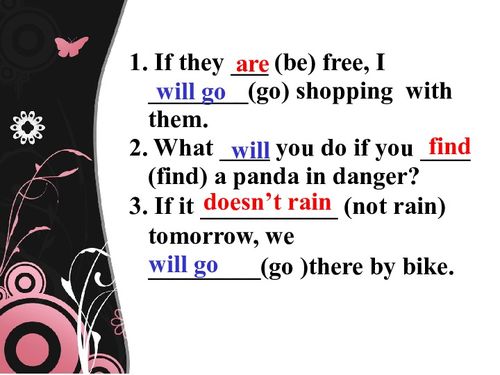Recycling Textiles:A Path to Sustainability and Environmental Conservation
Recycling textiles is a crucial step towards sustainability and environmental conservation. Textile waste, often discarded in landfills or incinerated, can be transformed into valuable resources through recycling processes. These processes involve sorting the textiles based on type (such as cotton, polyester, etc.), washing them to remove dirt and stains, and then using various techniques like reweaving, upcycling, or melt-making to create new products. This process not only reduces the amount of textile waste sent to landfills but also creates jobs and stimulates economic growth. It's important to note that while recycling textiles has numerous benefits, it still faces challenges such as high transportation costs and the need for proper infrastructure to facilitate this process. However, with continued efforts and innovation, the future of textile recycling looks promising, paving the way for a more sustainable and eco-friendly world.
Textile waste is a significant environmental problem that requires immediate attention. In recent years, there has been a growing trend towards recycling textiles, which not only reduces the amount of waste but also helps to preserve resources and protect the environment. This article will discuss the importance of recycling textiles, the different channels available for doing so, and some successful cases that demonstrate the potential of this approach.

Firstly, let's understand why recycling textiles is crucial. Textile waste often consists of synthetic materials such as polyester, nylon, and acrylic, which are difficult to decompose and can take hundreds of years to break down in landfills. By recycling textiles, we can reduce the amount of waste going to landfills, which helps to conserve natural resources and prevent pollution. Additionally, recycling textiles can save energy by reducing the need for new raw materials, which ultimately leads to cost savings for consumers.
Now, let's look at some of the different channels for recycling textiles. One option is through textile recycling facilities, which process textile scrap into usable materials such as fibers or yarn. These facilities typically require large amounts of raw materials, such as cotton or wool, and can be found in many parts of the world. Another option is through online marketplaces, where individuals can sell their used textiles to recyclers or manufacturers who use them as raw materials. Online marketplaces have become increasingly popular in recent years, with platforms like eBay and Amazon offering easy access to a global network of buyers and sellers.
One example of a successful textile recycling initiative is the "Renew" program launched by the American Apparel company. The program encourages customers to return their old clothing items to participating stores, which then donate them to local organizations that provide job opportunities and education programs for underprivileged communities. The program has helped to reduce textile waste by over 20 million pounds since its launch in 2014.
Another example is the "Recycled Textiles" campaign launched by the European Commission. The campaign aims to promote the use of recycled textiles in Europe by encouraging manufacturers to adopt sustainable practices and using recycled materials in their products. The campaign includes a range of initiatives, including campaigns to educate consumers about the benefits of recycling textiles and partnerships with retailers and manufacturers to promote the use of recycled materials.
In conclusion, recycling textiles is an important step towards sustainability and environmental conservation. There are various channels available for recycling textiles, including textile recycling facilities and online marketplaces. Successful examples include the "Renew" program launched by American Apparel and the "Recycled Textiles" campaign launched by the European Commission. By taking action now, we can help to create a more sustainable future for ourselves and generations to come.
随着全球纺织品回收行业的快速发展,回收纺织品渠道成为连接消费者与环保企业的重要桥梁,本篇报告将围绕“回收纺织品渠道”这一主题,探讨其运作模式、案例分析以及未来发展趋势。
回收纺织品渠道概述
运作模式
回收纺织品渠道主要包括线上回收平台、线下回收站点以及第三方回收服务,线上回收平台通过互联网技术收集消费者废弃纺织品,提供便捷的在线回收服务,线下回收站点则通过设立专门的回收点,方便消费者进行纺织品回收,第三方回收服务则为企业提供专业的纺织品回收、分类、处理等一站式服务。
案例分析

(1)线上回收平台案例
以某知名电商平台为例,该平台设立了专门的纺织品回收模块,消费者可以通过平台上传废弃纺织品,平台进行分类处理后进行销售或捐赠,该平台通过大数据分析,精准定位目标消费者群体,提高回收效率。
(2)线下回收站点案例
某地区设有多个大型社区回收站点,站点配备了专业的回收人员和设备,负责收集社区居民的废弃纺织品,站点定期举办回收活动,吸引更多居民参与,站点还与相关企业合作,开展纺织品再生利用项目,实现资源循环利用。
回收纺织品渠道的优势与挑战
优势:
- 便捷性:线上回收平台提供便捷的在线回收服务,方便消费者随时随地进行纺织品回收。
- 高效性:专业的回收人员和设备,提高回收效率。
- 环保意识:鼓励消费者积极参与纺织品回收,推动环保事业发展。
挑战:
- 资源有限:回收纺织品渠道需要面对资源有限的问题,如场地限制、设备老化等。
- 法律法规:不同地区法律法规不同,需要遵守相关法律法规。
- 信任建立:建立消费者对回收渠道的信任需要时间。
实践案例分析——以某地区为例
以某地区为例,该地区设有多个大型社区回收站点,站点负责人介绍其运作模式和经验。
- 运作模式:该站点定期举办回收活动,吸引居民参与;同时与相关企业合作,开展纺织品再生利用项目,站点配备了专业的回收人员和设备,负责收集社区居民的废弃纺织品;同时建立完善的档案管理制度,确保每件废旧纺织品的来源和去向可追溯。
- 经验总结:该站点通过大数据分析精准定位目标消费者群体,提高回收效率;同时加强与相关企业的合作,开展多种形式的再生利用项目,实现资源循环利用,该站点还注重宣传推广,提高消费者对纺织品回收的认识和参与度。
未来发展趋势与建议
- 发展趋势:随着环保意识的不断提高和技术的不断进步,未来回收纺织品渠道将更加智能化、专业化、多元化,线上回收平台将更加注重数据分析和用户需求,提供更加个性化的服务;线下回收站点将更加注重场地建设和设备更新,提高回收效率;第三方回收服务将更加注重专业性和规范化,提供更加优质的服务。
- 建议:企业应加强与政府部门的沟通协调,争取政策支持;同时加强技术研发和创新,提高回收效率和质量;加强宣传推广,提高消费者对纺织品回收的认识和参与度;同时注重可持续发展,实现资源循环利用和环保目标。
Articles related to the knowledge points of this article:
The Art of Textiles:Exploring the World of Meikai Textiles
The Evolution and Innovation of Chisen Textiles:A Journey Through Time



